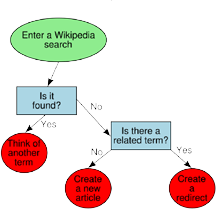
Flowchart diagram—
wikipedia.org/wiki/Diagram
| This is a work in progress: lots of writing, formatting, revising, proofing left to do! — David McMurrey |

When you take on long complicated sentences such as those in the long-sentence chapter, you need a method to visualize those sentences. The method shown here is not the old traditional sentence-diagramming method that children in the 1950s practiced. With this one, you simply spread out the major elements of a sentence, paraphrase them if necessary for clarity, and then show their coordinate and subordinate relationships so that you can see what's going on.
To use this diagramming method, you must be able to identify clauses and—in some cases—verbal phrases. Although not strictly necessary, this diagramming method is more effective if you understand the coordinate and subordinate relationship between sentence elements. See the resources at the end of this chapter for related links.
You can treat any clause or phrase as a major sentence element. However, all clauses and, sometimes, verbal phrases (participial and infinitive phrases, as well as possibly gerund and appositive phrases) are probably the best focus. The method is simple—just start each major element on a new line. We'll use those monster sentences in the long-sentence chapter to demonstrate the value of this diagramming method.
Overly long version: In the classical theory of gravity, which is based on real space-time, the universe can either have existed for an infinite time or else it had a beginning at a singularity at some finite time in the past, the latter possibility of which, in fact, the singularity theorems indicate, although the quantum theory of gravity, on the other hand, suggests a third possibility in which it is possible for space-time to be finite in extent and yet to have no singularities that formed a boundary or edge because one is using Euclidean space-times, in which the time direction is on the same footing as directions in space.
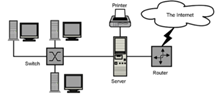
Ridiculous, huh? Most of us would need some way of diagramming or outlining this thing before we could begin to fix it—or even understand it.
Diagrammed version:
1 In the classical theory of gravity, which is based on real space-time,
2 the universe can either have existed for an infinite time or
3 else it had a beginning at a singularity at some finite time in the past,
4 the latter possibility of which, in fact, the singularity theorems indicate,
5 although the quantum theory of gravity, on the other hand, suggests a third possibility
6 in which it is possible for space-time to be finite in extent and yet
7 to have no singularities that formed a boundary or edge
8 because one is using Euclidean space-times,
9 in which the time direction is on
10 the same footing as directions in space.
Once you have created a rough diagram of the sentence, you can start building each piece into a complete sentence. As you do this, you can add transitions to create some coherence between these sentences. This process enables you to understand what this monster is trying to express. Here is the paraphrased version of the initial, rough diagram:
Paraphrased diagram:
1 The classical theory of gravity is based on real space-time.
2 Using this theory, there are two possibilities for the existence of the universe.
3 Either it can have existed for an infinite time,
or else it had a beginning at a singularity at some finite time in the past.
4 The latter possibility is indicated by the singularity theorems.
5 However, the quantum theory of gravity suggests a third possibility.
6 With quantum theory, it is possible for space-time to be finite in extent
and yet have no singularities that formed a boundary or edge.
7 This is because the quantum theory of gravity uses Euclidean space-times.
8 In Euclidean space-times, the time direction is on the same footing as directions in space.
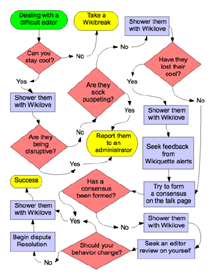
By paraphrasing the raw diagram, you rebuild the links and continuities of the sentence and create complete sentences. Notice how Using this theory echoes sentence 1. With quantum theory echoes sentence 4. This echoes sentence 5. In Euclidean space-times echoes sentence 7. This is good repetition: it builds strong continuity through the whole sequence of sentences. Either...or and However are nice strong transition markers.
If you are confident you can diagram and paraphrase sentence elements, try your hand at this exercise:
As mentioned at the beginning, understanding the concepts of coordination and subordination as they relate to sentence elements is not strictly necessary. The diagramming method you've seen to this point is a big help in reworking overly long sentences. However, seeing the coordinate and subordinate relationship between sentence elements gets you even deeper into the structure of a sentence. In the following diagram, sentences or their elements at the same level are "coordinate" to each other—they add same-level detail. Sentences or their elements that are indented are "subordinate" to each other—they go into greater detail about something stated in the preceding sentence.
Note: This method of diagramming was originally developed by Frances Christensen in several publications including Notes Toward a New Rhetoric.
Coordinate relationships between sentence elements:
Paraphrased diagram showing coordinate and subordinate relationships:
1 The classical theory of gravity, based on real space-time, suggests two possibilities for the existence of the universe.
2 Either it can have existed for an infinite time,
2 or else it had a beginning at a singularity at some finite time in the past.
3 The latter possibility is indicated by the singularity theorems.
1 However, the quantum theory of gravity suggests a third possibility.
2 With quantum theory, it is possible for space-time to be finite in extent
and yet have no singularities that formed a boundary or edge.
3 This is because the quantum theory of gravity uses Euclidean space-times.>
4 In Euclidean space-times, the time direction is on the same footing as directions in space.
What's going on here? Briefly, sentence 2 comments on (adds detail) to sentence 1; it's subordinate to sentence 1, and that's why it's indented. Sentence 3 does the same thing but in relation to sentence 2—it's further indented. Sentence 4 is coordinate to sentence 1: they both introduce "possibilities." Sentences 5, 6, and 7 each add detail to their higher-up cousins and are each at a lower level of subordination.
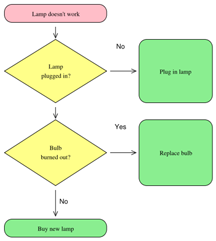
Notice how the wording changed in this last version. Sentences 1 and 2 in the first paraphrase are combined. Why not? Nothing really important is going on in sentence 1 of the first paraphrase.
What is this last diagram worth? If you had not noticed already, the paragraph is based on a comparison between two theories. The first theory offers up two possiblities. The second theory offers up a third possibility which seems to solve a problem that the first theory cannot resolve. You don't need a background in physics to see this structure or to revise the sentence so that this structure is obvious.
If you are confident you can diagram and paraphrase sentence elements and then analyze their coordinate and subordinate relationships, try your hand at this exercise:
Links to these exercises are provided at the end of the sections where they are relevant. But here they all are in case you read the text straight through:
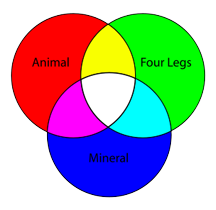
Return to the table of contents
Information and programs provided by admin@mcmassociates.io.